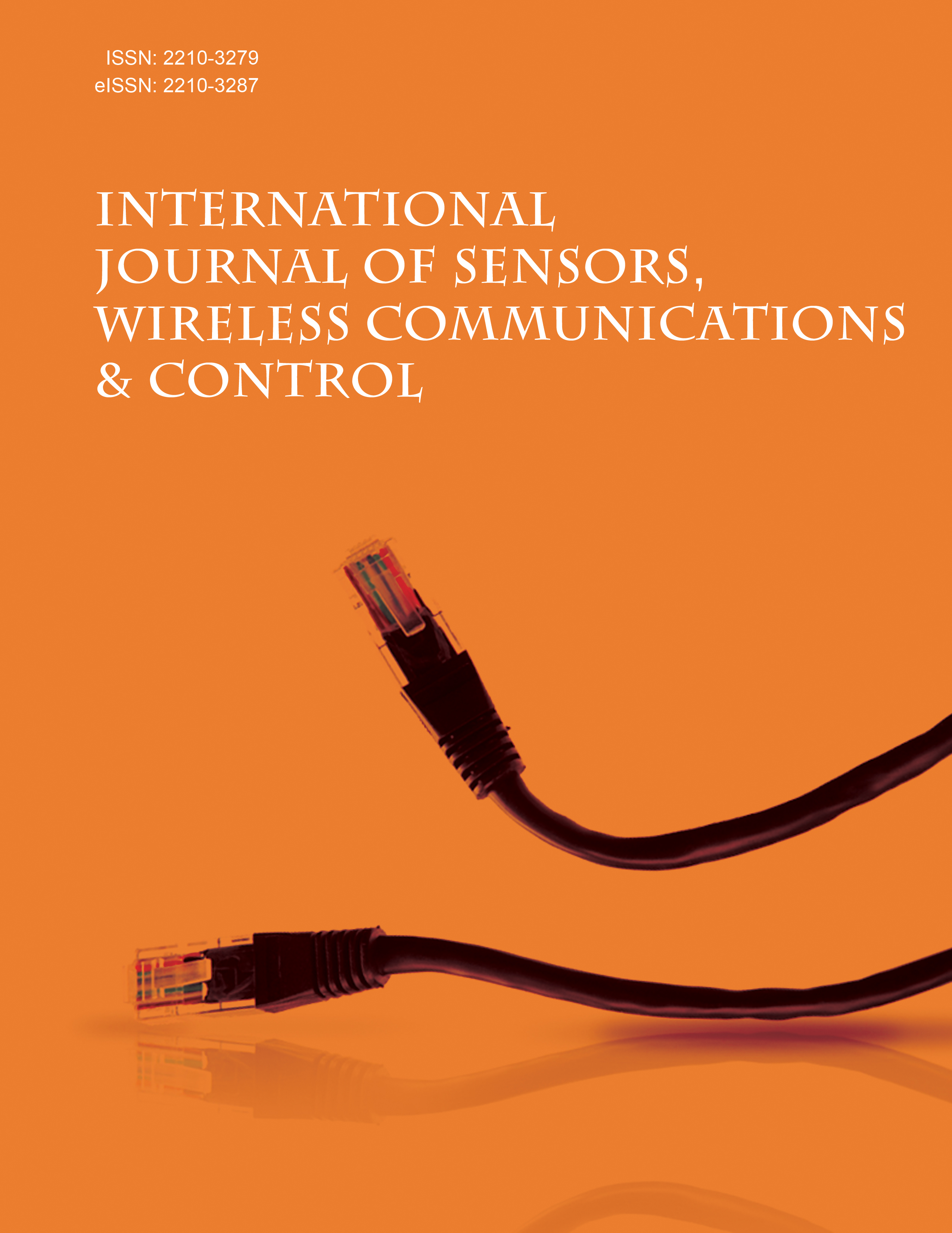- Home
- A-Z Publications
- International Journal of Sensors Wireless Communications and Control
- Previous Issues
- Volume 12, Issue 4, 2022
International Journal of Sensors Wireless Communications and Control - Volume 12, Issue 4, 2022
Volume 12, Issue 4, 2022
-
-
Seeing Through the Walls with Wireless Technology: A Review
More LessAuthors: Gautam Verma and Dolly SharmaBackground: Wireless technology has made a great impact on the whole world by providing us with 5G cellular to backscatter networking, from long-range wireless power to low-power wide-area networks. The ability to see through the walls via wireless signals has ushered in a new era. This technology has a wide range of applications, such as military, law enforcement, medicine, and games. Objective: This paper has concise Read More
-
-
-
Piezoelectric Vibration Energy Harvesters with Distinct Interdigital Electrodes Used for Toxic Gas Detection and in a Numerical Simulation for a Glucose Sensor Application
More LessAuthors: Salam Khrissi, Houda Lifi, Mohamed Lifi, Naima Nossir, Yassine Tabbai and Salma K. HnawiIntroduction: In this paper, a surface acoustic wave sensor (SAW) for dangerous gas sensing applications has been designed and validated. The glucose sensor applications have been simulated to show that the piezoelectric material has a high significance for use in detection. Background: Detection of gases is one of the major applications. SAW gas sensors extend their services into medical and even in power plants. A Surf Read More
-
-
-
An Ultra-wideband Dielectric Resonator Antenna for WSN based IoT Applications in Agriculture
More LessAuthors: Dishant Khosla and Kulwinder S. MalhiBackground: Agriculture sector is one of the prime and widely spread sectors. So to make it autonomous and increase its yield, we require a major technological improvement. The only solution to make advancement is with the use of wireless sensor networks. Internet of Things in this field is used to provide connectivity to all real-time sensors and to collect that data in computer-based systems without human involvement. Ob Read More
-
-
-
EECH/CF: An Energy-efficient Cluster Head Election and Cluster Formation Algorithms for WSNs
More LessBackground and Objective: Wireless sensor networks (WSN) consist of sensor nodes with a limited battery life and limited communication distance. The minimal energy expended by the sensor nodes and network can be achieved either by reducing the number of communications or by controlling the topology. Thus, energy consumption can be optimized by employing several techniques, such as clustering. Clustering all Read More
-
-
-
Cooperative Spectrum Sensing under SISO and MIMO Environment for Cognitive Radio Networks
More LessAuthors: Kavita Bani and Vaishali KulkarniBackground: Increasing demand for wireless devices leads to the efficient use of spectrum resources. Despite the limited availability of spectrum resources, all licensed users do not utilize their spectrum all the time. Objective: Cognitive Radio (CR) is used to detect free channels in the available spectrum resources and access them dynamically without interfering with licensed users. Various spectrum sensing (SS) techni Read More
-
-
-
Comprehensive Performance Analysis of Soft Data Fusion Schemes under SSDF Attacks in Cognitive Radio Networks
More LessAuthors: Younes Bouzegag, Teguig Djamal and Maali AbdelmadjidBackground: Trust and security are the biggest challenges facing the Cooperative Spectrum Sensing (CSS) process in Cognitive Radio Networks (CRNs). The Spectrum Sensing Data Falsification (SSDF) attack is considered the biggest threat menacing CSS. Methods: This paper investigates the performance of different soft data combining rules such as Maximal Ratio Combining (MRC), Square Law Selection (SLS), Square Law Co Read More
-
-
-
Internet of Vehicles Employing Network as a Service
More LessAuthors: Pranjul Kumar and Sanmukh KaurBackground: Vehicular ad hoc networks (VANETs) are built on the principles of mobile ad-hoc networks, and there are numerous approaches to achieving vehicular communication, like vehicle to infrastructure or vehicle to vehicle, with the advantage of ad-hoc networks. In VANETs, both vehicle-to-vehicle and vehicle-to-roadside architecture coexist to provide safety, services, and navigation; therefore, they are an integra Read More
-
-
-
LTE Modulation and Coding Schemes for 6G Networks
More LessAuthors: V. Venkataramanan, Ravleen K. Dehiya, Anshul Vora, Aman Shah, Aishwarya Nafre and Gandhi PrachiBackground: Long-term evolution (LTE) is the fourth generation (4G) mobile communication technology developed by the 3rd Generation Partnership Project (3GPP). In comparison to previous generations of cellular systems, LTE incorporates several innovative technologies. These innovative technologies are used to increase spectrum efficiency and data speeds, as envisioned by designers. Methods: This study provi Read More
-
Most Read This Month
Article
content/journals/swcc
Journal
10
5
false
en


